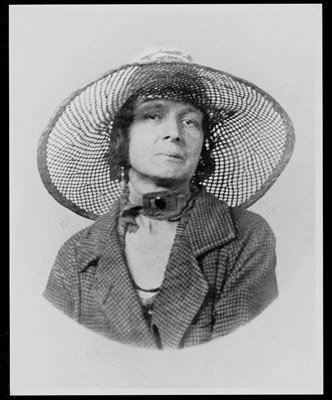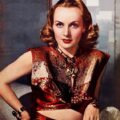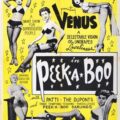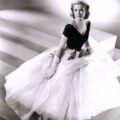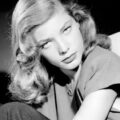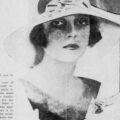Baroness Elsa von Freytag Loringhoven
April 13, 2015Baroness Elsa von Freytag Loringhoven must have loved her fantastic name, but she wasn’t born with it. Else Plötz was born in Germany in 1874, her father a builder and local politician who was disliked by his daughter, because he openly cheated on her mother and beat her. He also infected his wife with syphilis, a sexually transmitted disease that affects a person’s mind, leaving her suicidal and ending her days in an institution. The young Else felt that she was continuing her mother’s fight in her proto feministic stance.
The life and art of Baroness Elsa von Freytag Loringhoven
Affairs with different men
After several affairs with different men, Elsa’s first husband was the famous Jugendstil architect August Endell. Whilst still married to Endell, Elsa von Freytag Loringhoven began a relationship with Felix Paul Greve, a translator and author who worked on Oscar Wilde’s literature. After dumping Endell on a holiday all three took to Italy, she married Greve. The author was soon imprisoned for over a year for fraud, and Elsa waited for him, writing poetry in the mean time.
When he got out, he wrote two books based on Elsa’s life, Fanny Essler (1905) and The Master Mason’s House (1906). He was till writing about her in 1925, long after they had parted: his novel Settlers of the Marsh, has her as the main character, Clara Vogel, the “bad woman”. Greve had debts but an elaborate plan: he pretended he had committed suicide while actually travelling to America with Elsa. Shortly after they arrived he left her, speaking little English and stranded in rural Kentucky. Nevertheless she survived without him, shortly marrying Leopold Karl Friedrich Baron von Freytag Loringhoven. The wonderful title belied a similar story of his flight from Germany to the USA to avoid debts, and he quickly nicked her savings and disappeared too. She kept the aristocratic title and the artistic friends that they had in common.
She often modeled nude for artists
and appeared in the Dada film, The Baroness Shaves Her Pubic Hair by Man Ray and Duchamp. She was an artist in her own right as well, appropriating found objects.
The painter George Biddle visited her room in New York in 1917 and described what he saw: “odd bits of ironware, automobile tiles… ash cans, every conceivable horror, which to her tortured yet highly sensitive perception, became objects of formal beauty… it had to me quite as much authenticity as, for instance, Brancusi’s studio in Paris.”
Elsa von Freytag – Marcel Duchamp and the dada movement
It is thought that she actually created the sculpture which is credited to Marcel Duchamp, ‘Fountain”. This famous found object art work which consists of a signed urinal is more Baroness Elsa von Freytag Loringhoven’s scatalogical style than Duchamp’s, and bears a signature that looks like her handwriting, not his. Besides, he wrote in a letter to his sister that “one of my female friends under a masculine pseudonym, Richard Mutt, sent in a porcelain urinal as a sculpture” (to the Society of Independent Artists exhibition in New York in 1917).
Her clothing was that of a living sculpture:
“I went to the consulate with a large-wide sugarcoated birthday cake upon my head with fifty flaming candles lit – I felt just so spunky and afluent [sic]! In my ear I wore sugar plumes or matchboxes – I forget wich [sic]. Also I had put on several stamps as beauty spots on my emerald-painted cheeks and my eyelashes were made of gilded porcupine quills – rustling coquettishly – at the consul – with several ropes of dried figs dangling around my neck to give him a suck once and again – to entrance him. I should have liked to wear gaudy colored rubber boots up to my hips with a ballet skirt of genuine gold paper white [sic] lace paper covering it (to match the cake) – but I couldn’t afford that! I guess that inconsistency in my costume is to blame for my failure to please the officials?”
(undated letter from Baroness Elsa von Freytag Loringhoven to Djuna Barnes)
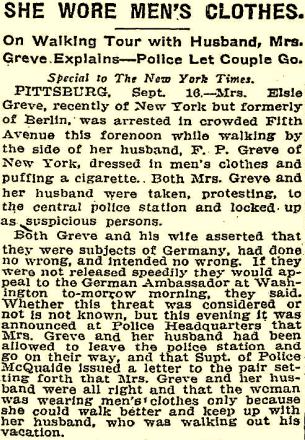
A newspaper report about Elsa’s arrest for crossdressing – although wearing mens clothes was quite tame for the Baroness-to-be.
She wore Men’s clothes
Elsa often found herself in trouble with the police because of her clothing, kleptomania, and wild ways. She died in 1927 under unclear circumstances – the gas oven in her apartment had been left on overnight, but whether it was a suicide, an accident or a “stupid joke” as her friend Djuna Barnes declared, we don’t know.
This living artwork, fashion muse and courageous and original multi talented individual deserves to be remembered as more than a footnote in other people’s lives. Long live The Baroness Elsa von Freytag Loringhoven!
Still from a reconstruction of Shaving the Baroness Elsa von Freytag Loringhoven2010
“Wheels are growing on Rose Bushes”, Baroness Elsa von Freytag-Loringhoven
Elsa shows off her finery
A nude of Baroness Elsa von Freytag-Loringhoven by Teresa Bernstein, about 1917
Still from a reconstruction of “Shaving the Baroness”, 2010
“Portrait of Marcel Duchamp”, about 1920 by Elsa von Freytag Loringhoven
“Limbswish” – Baroness Elsa Von Freytag – 1917-1918
1920s sketch by Baroness Elsa von Freytag-Loringhoven
The “Fountain” artwork, which may have been by von Freytag-Loringhoven
An interpretation of Elsa’s dress



